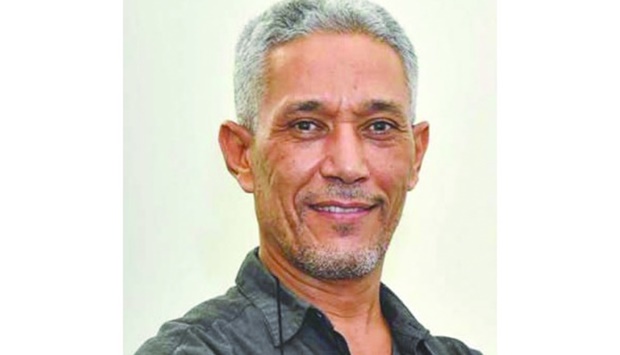An autonomous, handheld, programmable, multi-sensor outdoor air quality (AQ) sensing system has been developed by the Department of Electrical Engineering at the College of Engineering, Qatar University.
The US-patented system is aimed at ensuring a safe and healthy environment, especially during the Covid-19 pandemic and as Qatar stands on the threshold of hosting the FIFA World Cup 2022.
Information about the system is highlighted in an article in the latest edition of the QU research magazine. ‘Environmentally Powered Smart System for Urban Scale Mapping and Assessment of Outdoor Air Quality in Qatar' by Prof Farid Touati, professor of electrical engineering and Hasan Tariq, research assistant at the college of engineering, explains this is the first AQ Mapping (AQM) platform in Qatar for environmental mapping and profiling and expected to serve as a model reference architecture for future urban-scale environmental artificial intelligence systems in the country.
“Two deployment methods were performed during the project span. The system was deployed as a static measurement station on four sites in Qatar University and later as a mobile mapping station placed on a Toyota Camry, patrolling in Doha for three AQM trips. Real-time urban AQM was observed in the loT ( Internet of Things) platform. AQ was mapped, processed, and forecast at national landmarks in Qatar, for the future to ensure maximum environmental safety for citizens and tourists,” the article explained.
The article also noted: “The real-time geospatial study of prime environmental variables impacting lives was sensed at static and mobile monitoring nodes to probe the AQ. Abiding standards were ensured by implementing the AQ indexes recommended by WHO and international EPAs (Environmental Protection Agency) especially the US and the EU. Five EPA recommended commercial grade air quality index sensors (particulate matter, ozone, sulphur dioxide, nitrogen dioxide, and carbon monoxide) as well as carbon dioxide and volatile organic compounds sensors were networked on board.”
For environmental profiling and vertical and horizontal mapping, a combination of sensors were utilised to measure accuracy-improved position as well as temperature, pressure, humidity, wind speed, and altitude.
The developed air quality system has been a success story in many research forums locally. Furthermore, this system was selected to represent Qatar in the biggest Euro- Asian Technology and Innovation competition in Russia named 5PIEF2020 and SPIEF2021.
The US-patented system is aimed at ensuring a safe and healthy environment, especially during the Covid-19 pandemic and as Qatar stands on the threshold of hosting the FIFA World Cup 2022.
Information about the system is highlighted in an article in the latest edition of the QU research magazine. ‘Environmentally Powered Smart System for Urban Scale Mapping and Assessment of Outdoor Air Quality in Qatar' by Prof Farid Touati, professor of electrical engineering and Hasan Tariq, research assistant at the college of engineering, explains this is the first AQ Mapping (AQM) platform in Qatar for environmental mapping and profiling and expected to serve as a model reference architecture for future urban-scale environmental artificial intelligence systems in the country.
“Two deployment methods were performed during the project span. The system was deployed as a static measurement station on four sites in Qatar University and later as a mobile mapping station placed on a Toyota Camry, patrolling in Doha for three AQM trips. Real-time urban AQM was observed in the loT ( Internet of Things) platform. AQ was mapped, processed, and forecast at national landmarks in Qatar, for the future to ensure maximum environmental safety for citizens and tourists,” the article explained.
The article also noted: “The real-time geospatial study of prime environmental variables impacting lives was sensed at static and mobile monitoring nodes to probe the AQ. Abiding standards were ensured by implementing the AQ indexes recommended by WHO and international EPAs (Environmental Protection Agency) especially the US and the EU. Five EPA recommended commercial grade air quality index sensors (particulate matter, ozone, sulphur dioxide, nitrogen dioxide, and carbon monoxide) as well as carbon dioxide and volatile organic compounds sensors were networked on board.”
For environmental profiling and vertical and horizontal mapping, a combination of sensors were utilised to measure accuracy-improved position as well as temperature, pressure, humidity, wind speed, and altitude.
The developed air quality system has been a success story in many research forums locally. Furthermore, this system was selected to represent Qatar in the biggest Euro- Asian Technology and Innovation competition in Russia named 5PIEF2020 and SPIEF2021.


